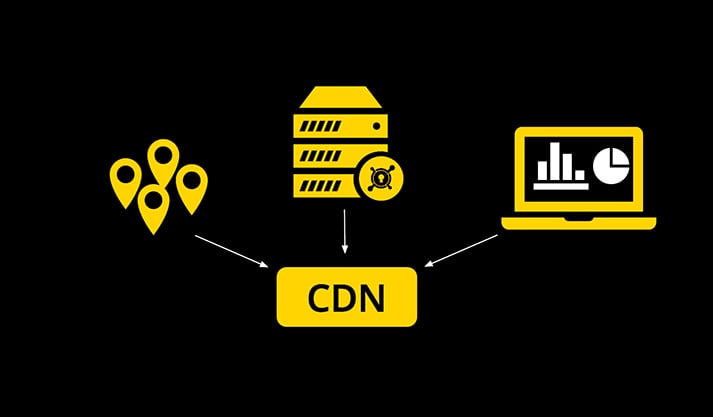Almost half of the world’s population made a purchase online last year, and that number is on a steady incline. Interestingly 71% of all buyers start with ‘generic unbranded searches’. If that’s the case, how do you make sure their next search lands on your Commerce site?
As Niteco’s SEO specialist, I suggest you focus on:
- Making your online store more visible on the SERP (Search Engine Result Page)
- Ranking higher organically rather than relying on paid traffic from display ads
- Sorting out the site architecture for easy navigation
- Optimizing the images and the description of your products.
What’s SEO and why is it worth paying attention to?
In layman’s terms Search Engine Optimization (SEO) helps improve the ranking of your products on search engines like Google and Bing, helping to drive traffic to your site.
SEO is worth paying attention to when you think of the typical online buyer’s behaviour, which involves searching for a product, comparing it to other similar products on the market, checking out the price and the product ‘promise’ before making a decision to buy. Making that decision to buy is known in SEO spheres as a ‘conversion’ – the ultimate goal every Commerce manager strives for.
But before we talk tactics, companies need to consider the following:
-
Competitor benchmarking: Check out the competition in order to help you gauge what’s already out there and how you can set yourself apart; what you like and what you don’t want to see/experience on your own site. Producing a SWOT analysis or TOWS matrix would be a useful exercise at this juncture
-
Page priority: Pages which get the maximum traffic need to be nurtured and optimized further. Basis the analysis drilling down to the right page is necessary
-
Site Architecture: Decide on the whole layout of the website. Consider the visuals, technical planning, content layout etc.
-
Right Keywords: Choose the right set of keywords, alt image tags, image description, meta-description etc...
SEO Basics to Focus on:
1. Keyword Strategy: Keywords form the most essential part of your website as they need to be optimized and researched based on what you think your preferred user might search for. Not only that, consider how frequently a keyword is searched for on major search engines such as google and bing.
CPC: Cost-per-clickandvolume of overall searches for the keyword need to be identified. With this information, site content can be planned accordingly. A typical user will search around a specific word or a long tail specific keyword to get the applicable results on SERP. For example, a user might be searching for something specific in a moisturizer such as “hand and body lotion” and the results will be displayed accordingly.
2. Simplify the site architecture: User navigation is important to lead to the right landing pages and simpler is always considered better. If a user can access the right information in less than three clicks, it is considered an ideal scenario. Hence, the importance of laying out a website that’s easy to navigate.
3. Home Page: The home page is considered key to defining what a website is all about. The majority of users land on a home page, therefore it’s essential that a home page is designed well, with a proper format that’s user-friendly.
-
Title tags are considered important and they should be written in less than 70 words. They define the page and would be the first thing users will see when they search for you
-
The Meta-description is notas important as title tags but they are sufficiently important for laying out the description of what exactly the page or the URL intends to tell the user. It needs to be below 160 characters and the same shows up below the search result of the company page
-
Images: Professional images for each product shall highlighthow the product looks. Each image needs to be given a name so that the crawler can identify what it is it’s crawling through. Images without names or, images with file extensions such PNG or JPEG do not give a good user experience
-
Contact Form: A prospective customer would have loads of queries before making a purchase or might be interested in knowing more about the product features. Adding a contact form that’s straightforward is helpful.
4. Product pages: These pages are your main source of traffic, therefore optimizing them is essential. Reviews, Price, Product Image, Product description along with specific keywords to enhance the search for the product are important.
-
Reviews: Having a review section enhances the authenticity and gives more reasons to a customer to buy the product
-
Price: This should be the highlight. If the price of the product is put out on the display section in an appealing, easily readable fashion, it will lead to higher conversions in no time at all
-
Product Image: The image of the product, together with an accurate description is necessary in order to gain appeal
-
Product Description: The description of any product should be catchy and should include all the details which a user might be interested in knowing about
-
FAQ Page: This acts as an important medium. With a detailed FAQ page, the user journey is simplified and leads a user to take an action instantly. Shipping and return policies are the most sought-after queries for any Commerce portal.
5. Page Optimization: Pages need to be optimized to run smoothly as well as have higher assigned ranks through SEO
-
Page Load: Page load needs to be reduced. The higher the page load time, the higher the bounce rate and lesser the conversions overall. Removing unnecessary plug-ins, reducing the image size etc. are few of the key elements to investigate
-
Image Resolution/Dimensions: Quite rightly, we all love professional images. But if the images are too big, they can very well increase the load times and lead to a poor user experience. Optimizing them is key. Reduce the dimensions and adjust the quality level.
6. Competitor Landscape: Competition in Commerce is intense, therefore it’s worth keeping an eye on your competitors’ websites as well as top products on the SERP’s. Keyword research and RTB (Real Time Bidding) for paid ads becomes easier if you know what is working and what is not by conducting competitor research.
7. Backlinks: Getting backlinks from higher domain authority websites is always the best possible move in order to enhance the search for your Commerce portal. Reaching out to influencers and enhancing your brand image will lead to higher footfalls and conversions eventually.
8. CTA buttons: a catchy CTA will always lead to more clicks and increase the user experience. CTAs need to be well defined and should attract attention instantly. As per industry standard a good conversion rate for any Commerce website is roughly around 1 – 2%.
9. Mobile Optimization: Mobile website is of utmost importance as majority of the customers prefer to buy and browse through products on their handset. A well optimized mobile website is always a big draw for conversions. This is also why a mobile first design approach is so important in developing your Commerce site.
A typical conversion for a user on any Commerce website are:
-
Click on the CTA to buy a product
-
Item added in the cart
-
More items added in the cart (cross-sell)
-
Items in the Wishlist
-
Discount codes/coupons applied
-
Cart abandoned or items bought
-
Follow up for delivery
Each of the items above is a definite goal metric that can be investigated. This will also lead you to the right marketing spend so that the landing pages can be enhanced accordingly.
If a customer can check out as a guest, it helps the website with lesser dropouts as it is easier for a customer to put his email ID and proceed rather than being asked to register with a stack of information. Boost the user journey further by incorporating a chatbot on your site too.
Learn how we took a global Commerce website (Braun Household) to the next level!
To conclude, it’s wise to consider a gamut of things regarding your Commerce site in order for your company to stay ahead of its competitors. Follow these steps and your site will yield higher conversions in no time. To learn more, get in touch with Niteco here.
to transform your business and drive results?



